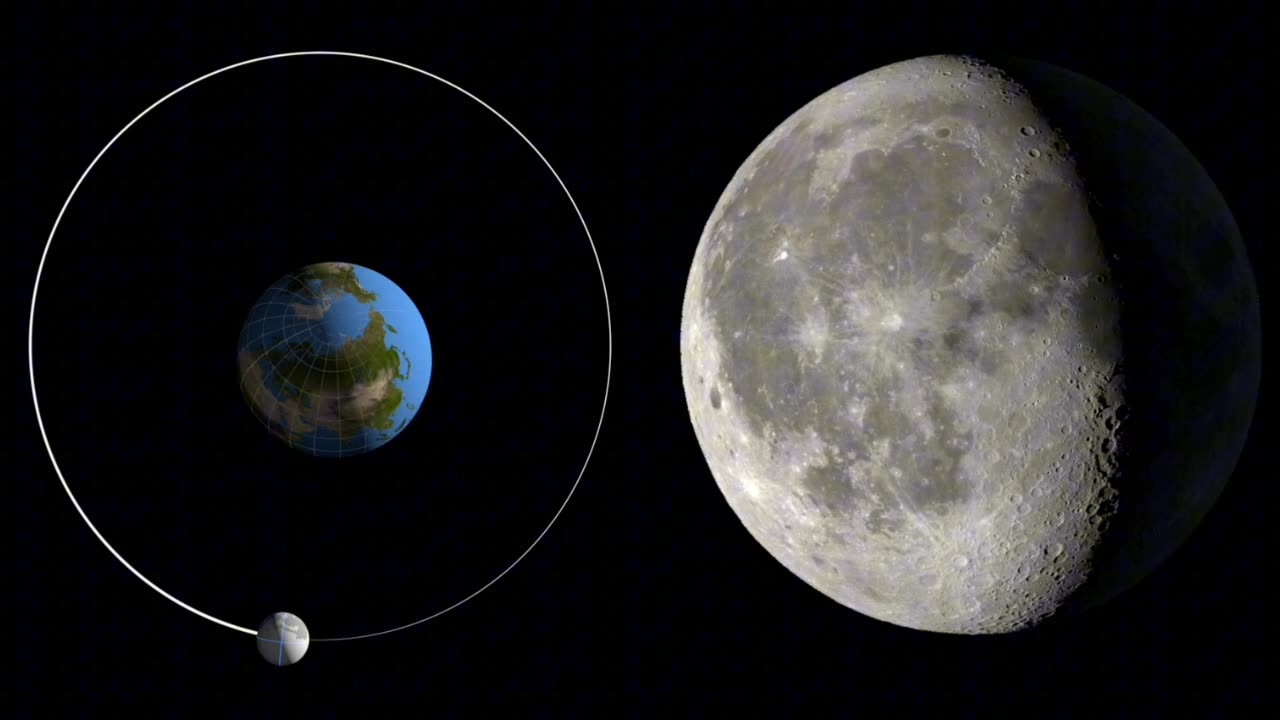Premium Only Content

Earth and the Moon's rotation of the year। Nasa
The orbit of the Moon in 2023, viewed from the north pole of the ecliptic, with the vernal equinox to the right. The sizes of the Earth and Moon are exaggerated by a factor of 15, 20, or 25, depending on the frame size. The frames include an alpha channel.
From this birdseye view, it's somewhat easier to see that the phases of the Moon are an effect of the changing angles of the Sun, Moon and Earth. The Moon is full when its orbit places it in the middle of the night side of the Earth. First and Third Quarter Moon occur when the Moon is along the day-night line on the Earth.
The First Point of Aries is at the 3 o'clock position in the image. The Sun is in this direction at the March equinox. You can check this by freezing the animation at around the 1:03 mark, or by freezing the full animation with the time stamp near March 20. This direction serves as the zero point for both ecliptic longitude and right ascension.
The north pole of the Earth is tilted 23.5 degrees toward the 12 o'clock position at the top of the image. The tilt of the Earth is important for understanding why the north pole of the Moon seems to swing back and forth. In the full animation, watch both the orbit and the "gyroscope" Moon in the lower left. The widest swings happen when the Moon is at the 3 o'clock and 9 o'clock positions. When the Moon is at the 3 o'clock position, the ground we're standing on is tilted to the left when we look at the Moon. At the 9 o'clock position, it's tilted to the right. The tilt itself doesn't change. We're just turned around, looking in the opposite direction.
-
 3:11:52
3:11:52
Esports Awards
4 hours agoEsports Awards: Decade Awards 2025
41.2K3 -
 1:02:58
1:02:58
Sarah Westall
2 hours agoMILITARY WHISTLEBLOWER: How Social Media Military Level Psyops are Manipulating You w/ Patrick Bergy
6.03K3 -
 30:41
30:41
Stephen Gardner
2 hours ago🔥WHITE HOUSE GETS UNEXPECTED BIG WIN!
10.4K10 -
 9:39
9:39
MattMorseTV
4 hours ago $0.31 earnedVance just DROPPED a BOMBSHELL.
10.4K41 -
 2:40:14
2:40:14
DooM49
3 hours agoThe Grind for Battlefield 6 Skins - A-10 Unlocked
672 -
 1:47:49
1:47:49
Jeff Ahern
4 hours ago $0.31 earnedThe Sunday Show!
120K4 -
 LIVE
LIVE
Spartan
2 hours agoExpedition 33, Halo Later on (Maybe)
45 watching -
 LIVE
LIVE
Meisters of Madness
2 hours agoFinals and Wuchang!
52 watching -
 LIVE
LIVE
Lofi Girl
2 years agoSynthwave Radio 🌌 - beats to chill/game to
203 watching -
 LIVE
LIVE
BBQPenguin_
3 hours agoTasking & PVP
29 watching